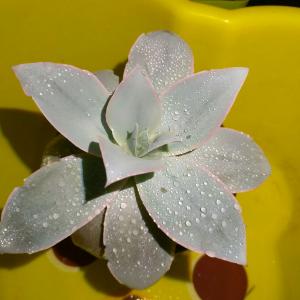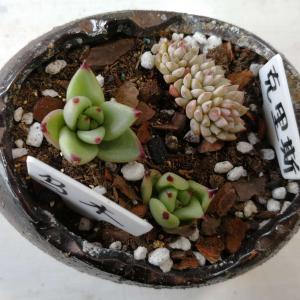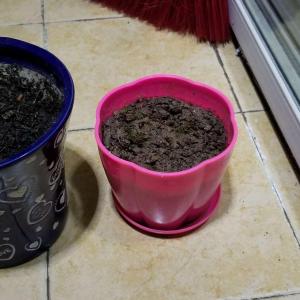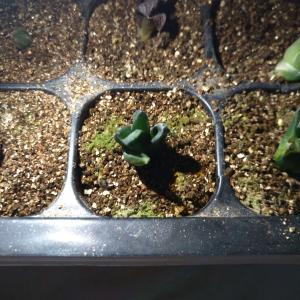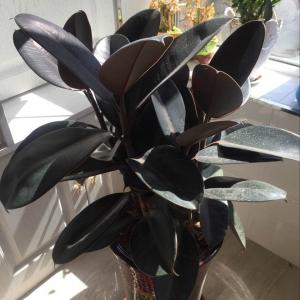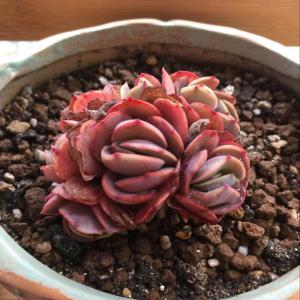文章
Miss Chen
2018年03月08日

Description: This perennial wildflower is 2–3½' tall, sometimes branching in the upper half. The stems are light green and usually hairless; however, some variants of this species have pubescent stems. Alternate compound leaves occur at intervals along the stems; they are trifoliate and their leaflets are extended horizontally in relation to the ground. Individual leaflets are up to 3½" long and ¾" across; they are 3-6 times as long as they are wide. Some variants of this species have more narrow leaflets than others. The terminal leaflet is the same length or a little longer than the lateral leaflets. The leaflets are elliptic to oblong in shape and smooth along their margins. Their upper surfaces are medium green and glabrous, while their lower surfaces are pale to medium green and covered with appressed white hairs. The petioles of the compound leaves are up to 2" long, light green, and mostly hairless. At the base of each petiole, there is a pair of tiny deciduous stipules that are linear-lanceolate; these stipules soon wither away. The petiolules (secondary petioles) of the lateral leaflets are very short (less than 1/8" or 3 mm.), while the petiolules of the terminal leaflets are longer (up to ½").
Flowers
The upper stems terminate in either racemes or narrow panicles of flowers. The branches of each inflorescence are light green and covered with hooked hairs. Individual flowers are ¼" long (or a little more), consisting of 5 petals, a short tubular calyx with teeth, an ovary with a single style, and several hidden stamens. The flowers have a typical pea-like structure, consisting of an upright banner and 2 lateral wings that enclose a central keel. The petals are pink to rosy pink; at the base of the upper petal (banner), there are 1-2 tiny patches of yellow. The green calyx is covered with hooked hairs. The slender petioles of the flowers are about ½" long; they are green to reddish purple and also covered with hooked hairs. The blooming period occurs from mid-summer to early fall and lasts about 1–1½ months. There is no noticeable floral scent. Fertile flowers are replaced by flat loments (a type of seedpod) that are about ½–1½" long. Each loment consists of 2-6 rounded segments, a short stipe, and sometimes a short beak. Each segment of a loment is more rounded along the bottom than along the top; it contains a single seed. The loments are covered with hooked hairs. The root system consists of an elongated caudex with fibrous roots. This wildflower spreads by reseeding itself.
Cultivation: The preference is partial sun, mesic to dry-mesic conditions, and sandy or rocky soil.

Range & Habitat: The native Panicled Tick Trefoil is occasional in all areas of Illinois, except the NW section, where it is rare or absent (see Distribution Map). Habitats consist of thinly wooded bluffs, rocky open woodlands, sandy open woodlands, sandy savannas and typical savannas, woodland edges, thickets, rocky glades, and partially shaded roadside embankments. This wildflower is a pioneer species that prefers some disturbance from wildfires, selective logging, and others causes.
Faunal Associations: Long-tongued bees collect pollen from the flowers; these relatively uncommon floral visitors include bumblebees (Bombus spp.), leaf-cutting bees (Megachile spp.), and long-horned bees (Melissodes spp.). Other insects feed on the leaves, flowers, and seeds of Desmodium spp. (Tick Trefoils). For example, the caterpillars of several skippers feed on the leaves: Achalarus lyciades (Hoary Edge), Epargyreus clarus (Silver-Spotted Skipper), Thorybes bathyllus (Southern Cloudywing), and Thorybes pylades (Northern Cloudywing). The caterpillars of the butterfly Everes comyntas (Eastern Tailed Blue) also feed on the foliage, while the caterpillars of the butterfly Strymon melinus (Gray Hairstreak) eat the flowers and developing seedpods. These insect feeders include many kinds of beetles, and some species of thrips, aphids, moth caterpillars, and stinkbugs (see Insect Table). The seeds are eaten by some upland gamebirds (Bobwhite Quail, Wild Turkey) and small rodents (White-Footed Mouse, Deer Mouse), while the foliage is readily eaten by White-Tailed Deer and other hoofed mammalian herbivores. The Cottontail Rabbit also consumes the foliage. The sticky seedpods (loments) cling to the fur of animals and the clothing of humans. As a result, the seeds are carried to new locations.

Photographic Location: A sandy savanna at Hooper Branch Savanna Nature Preserve in Iroquois County, Illinois.
Comments: Among different populations of Panicled Tick Trefoil, there is significant variation in the width of the leaflets and the hairiness of the stems and leaflets. Usually, this wildflower has fairly narrow leaflets, hairless to nearly hairless stems, and hairless upper surfaces on the leaflets. It can be distinguished from other species in this genus by considering the following key characteristics: 1) the narrow leaflets are 3-6 times longer than they are across, 2) the petioles of the trifoliate leaves are fairly long (up to 2"), 3) the deciduous stipules of the trifoliate leaves are small and insignificant, and 4) the leaflets are rather long (up to 3½"). Panicled Tick Trefoil is one of the more common species of this genus in Illinois.
Flowers
The upper stems terminate in either racemes or narrow panicles of flowers. The branches of each inflorescence are light green and covered with hooked hairs. Individual flowers are ¼" long (or a little more), consisting of 5 petals, a short tubular calyx with teeth, an ovary with a single style, and several hidden stamens. The flowers have a typical pea-like structure, consisting of an upright banner and 2 lateral wings that enclose a central keel. The petals are pink to rosy pink; at the base of the upper petal (banner), there are 1-2 tiny patches of yellow. The green calyx is covered with hooked hairs. The slender petioles of the flowers are about ½" long; they are green to reddish purple and also covered with hooked hairs. The blooming period occurs from mid-summer to early fall and lasts about 1–1½ months. There is no noticeable floral scent. Fertile flowers are replaced by flat loments (a type of seedpod) that are about ½–1½" long. Each loment consists of 2-6 rounded segments, a short stipe, and sometimes a short beak. Each segment of a loment is more rounded along the bottom than along the top; it contains a single seed. The loments are covered with hooked hairs. The root system consists of an elongated caudex with fibrous roots. This wildflower spreads by reseeding itself.
Cultivation: The preference is partial sun, mesic to dry-mesic conditions, and sandy or rocky soil.

Range & Habitat: The native Panicled Tick Trefoil is occasional in all areas of Illinois, except the NW section, where it is rare or absent (see Distribution Map). Habitats consist of thinly wooded bluffs, rocky open woodlands, sandy open woodlands, sandy savannas and typical savannas, woodland edges, thickets, rocky glades, and partially shaded roadside embankments. This wildflower is a pioneer species that prefers some disturbance from wildfires, selective logging, and others causes.
Faunal Associations: Long-tongued bees collect pollen from the flowers; these relatively uncommon floral visitors include bumblebees (Bombus spp.), leaf-cutting bees (Megachile spp.), and long-horned bees (Melissodes spp.). Other insects feed on the leaves, flowers, and seeds of Desmodium spp. (Tick Trefoils). For example, the caterpillars of several skippers feed on the leaves: Achalarus lyciades (Hoary Edge), Epargyreus clarus (Silver-Spotted Skipper), Thorybes bathyllus (Southern Cloudywing), and Thorybes pylades (Northern Cloudywing). The caterpillars of the butterfly Everes comyntas (Eastern Tailed Blue) also feed on the foliage, while the caterpillars of the butterfly Strymon melinus (Gray Hairstreak) eat the flowers and developing seedpods. These insect feeders include many kinds of beetles, and some species of thrips, aphids, moth caterpillars, and stinkbugs (see Insect Table). The seeds are eaten by some upland gamebirds (Bobwhite Quail, Wild Turkey) and small rodents (White-Footed Mouse, Deer Mouse), while the foliage is readily eaten by White-Tailed Deer and other hoofed mammalian herbivores. The Cottontail Rabbit also consumes the foliage. The sticky seedpods (loments) cling to the fur of animals and the clothing of humans. As a result, the seeds are carried to new locations.

Photographic Location: A sandy savanna at Hooper Branch Savanna Nature Preserve in Iroquois County, Illinois.
Comments: Among different populations of Panicled Tick Trefoil, there is significant variation in the width of the leaflets and the hairiness of the stems and leaflets. Usually, this wildflower has fairly narrow leaflets, hairless to nearly hairless stems, and hairless upper surfaces on the leaflets. It can be distinguished from other species in this genus by considering the following key characteristics: 1) the narrow leaflets are 3-6 times longer than they are across, 2) the petioles of the trifoliate leaves are fairly long (up to 2"), 3) the deciduous stipules of the trifoliate leaves are small and insignificant, and 4) the leaflets are rather long (up to 3½"). Panicled Tick Trefoil is one of the more common species of this genus in Illinois.
0
0
文章
Miss Chen
2018年03月08日

Description: This perennial wildflower is 2–3½' tall, branching occasionally. The stems are medium green to brown and sparsely to densely covered with both hooked and straight hairs. Alternate compound leaves occur at intervals along these stems; the structure of the leaves is trifoliate. Each compound leaf has a hairy petiole up to ½" long; at the base of each petiole, there is a pair of tiny deciduous stipules that are linear-lanceolate in shape. Individual leaflets are up to 2½" long and 1¼" across; they are oval to narrowly oval in shape, smooth and slightly ciliate along their margins, and rough-textured. Their upper surfaces are medium green and sparsely covered with short stiff hairs, while their lower surfaces are light green and covered with similar hairs. The terminal leaflet is larger in size than the lateral leaflets; the lateral leaflets have very short petiolules (secondary petioles), while the petiolule of the terminal leaflet is up to ½" long.

The upper stems terminate in either panicles or racemes of flowers about ½–1½' long and about one-third as much across or less. The central stalk of a panicle branches either oppositely or in whorls of 3. Both the central stalk and its lateral branches (if any) are covered with hooked hairs. Individual flowers occur on short pedicels up to ½" long. Each flower is about ¼" long, consisting of 5 pink to rosy pink petals, a very short tubular calyx that is toothed, an ovary with a single style, and several stamens. The flower has a pea-like structure, consisting of an upper banner and two lateral wings that enclose a lower keel. At the base of the banner, there is a small patch of yellow. The blooming period occurs from mid-summer to early fall and lasts about 1–1½ months. Fertile flowers are replaced by small loments (segmented flat seedpods) about ½–¾" long. Each loment usually consists of 2-3 segments; the lower side of each segment is more rounded than the upper side. Loments have veryDistribution Map short stipes and sometimes terminal beaks; their sides are covered with hooked hairs. Each segment of a loment contains a single seed. The root system consists of a narrow caudex with fibrous roots. This wildflower reproduces by reseeding itself, sometimes forming small colonies.
Cultivation: The preference is partial sun, dry-mesic conditions, and sandy or rocky soil. Nitrogen is added to the soil through a symbiotic association between the root system and mycorrhizal bacteria.
Range & Habitat: The native Obtuse-Leaved Tick Trefoil occurs in scattered locations in southern, western, and a few other areas in Illinois; it is uncommon within the state. Illinois lies along the NW range limit of this species. Habitats include open sandy woodlands, upland rocky woodlands, sandy savannas, woodland edges, rocky glades, and powerline clearances in sandy or rocky woodlands. Occasional wildfires or other disturbance tends to increase populations of this wildflower in the preceding habitats.
Faunal Associations: The flowers offer only pollen as a reward to insect visitors. These floral visitors consist primarily of bumblebees (Bombus spp.), long-horned bees (Melissodes spp.), and leaf-cutting bees (Megachile spp.). Other insects feed on the foliage, flowers, seedpods, or plant juices of Desmodium spp. (Tick Trefoil species). These insect feeders include such skipper caterpillars as Achalarus lyciades (Hoary Edge), Thorybes bathyllus (Southern Cloudywing), Thorybes pylades (Northern Cloudywing), and Epargyreus clarus (Silver-Spotted Skipper); the caterpillars of the butterflies Everes comyntas (Eastern Tailed Blue) and Strymon melinus (Gray Hairstreak) also feed on these plants. Other insects feeders include various beetles, stink bugs, aphids, thrips, and moths (see Insect Table for a listing of these species). Among vertebrate animals, the seeds are eaten by some upland gamebirds (Bobwhite, Wild Turkey) and small rodents (White-Footed Mouse, Deer Mouse), while the foliage is browsed by White-Tailed Deer and the Cottontail Rabbit. The foliage is also palatable to cattle, horses, and sheep. The seedpods cling readily to the fur of animals and the clothing of humans; as a result, the seeds are distributed to new locations.
Photographic Location: A sandy savanna at the Hooper Branch Savanna Nature Preserve in Iroquois County, Illinois.
Comments: This is one of several Desmodium spp. (Tick Trefoil species) in Illinois. Many of these species are found in savannas and open woodlands; their small pinkish flowers are very similar to each other. Obtuse-Leaved Tick Trefoil has wider leaflets than most other species in this genus (about 2-3 times as long as they are wide). Other critical features for identification include the following: 1) the stipules are tiny and deciduous, 2) the loments usually consist of only 2-3 segments, 3) the segments of the loments are rounded on both sides, although more so on their lower sides than their upper sides, and 4) the leaflets are relatively large (up to 2½" long and 1¼" across) and rough-textured. Another common name of this species is Stiff Tick Trefoil, which is derived from an obsolete scientific name, Desmodium rigidum.

The upper stems terminate in either panicles or racemes of flowers about ½–1½' long and about one-third as much across or less. The central stalk of a panicle branches either oppositely or in whorls of 3. Both the central stalk and its lateral branches (if any) are covered with hooked hairs. Individual flowers occur on short pedicels up to ½" long. Each flower is about ¼" long, consisting of 5 pink to rosy pink petals, a very short tubular calyx that is toothed, an ovary with a single style, and several stamens. The flower has a pea-like structure, consisting of an upper banner and two lateral wings that enclose a lower keel. At the base of the banner, there is a small patch of yellow. The blooming period occurs from mid-summer to early fall and lasts about 1–1½ months. Fertile flowers are replaced by small loments (segmented flat seedpods) about ½–¾" long. Each loment usually consists of 2-3 segments; the lower side of each segment is more rounded than the upper side. Loments have veryDistribution Map short stipes and sometimes terminal beaks; their sides are covered with hooked hairs. Each segment of a loment contains a single seed. The root system consists of a narrow caudex with fibrous roots. This wildflower reproduces by reseeding itself, sometimes forming small colonies.
Cultivation: The preference is partial sun, dry-mesic conditions, and sandy or rocky soil. Nitrogen is added to the soil through a symbiotic association between the root system and mycorrhizal bacteria.
Range & Habitat: The native Obtuse-Leaved Tick Trefoil occurs in scattered locations in southern, western, and a few other areas in Illinois; it is uncommon within the state. Illinois lies along the NW range limit of this species. Habitats include open sandy woodlands, upland rocky woodlands, sandy savannas, woodland edges, rocky glades, and powerline clearances in sandy or rocky woodlands. Occasional wildfires or other disturbance tends to increase populations of this wildflower in the preceding habitats.
Faunal Associations: The flowers offer only pollen as a reward to insect visitors. These floral visitors consist primarily of bumblebees (Bombus spp.), long-horned bees (Melissodes spp.), and leaf-cutting bees (Megachile spp.). Other insects feed on the foliage, flowers, seedpods, or plant juices of Desmodium spp. (Tick Trefoil species). These insect feeders include such skipper caterpillars as Achalarus lyciades (Hoary Edge), Thorybes bathyllus (Southern Cloudywing), Thorybes pylades (Northern Cloudywing), and Epargyreus clarus (Silver-Spotted Skipper); the caterpillars of the butterflies Everes comyntas (Eastern Tailed Blue) and Strymon melinus (Gray Hairstreak) also feed on these plants. Other insects feeders include various beetles, stink bugs, aphids, thrips, and moths (see Insect Table for a listing of these species). Among vertebrate animals, the seeds are eaten by some upland gamebirds (Bobwhite, Wild Turkey) and small rodents (White-Footed Mouse, Deer Mouse), while the foliage is browsed by White-Tailed Deer and the Cottontail Rabbit. The foliage is also palatable to cattle, horses, and sheep. The seedpods cling readily to the fur of animals and the clothing of humans; as a result, the seeds are distributed to new locations.
Photographic Location: A sandy savanna at the Hooper Branch Savanna Nature Preserve in Iroquois County, Illinois.
Comments: This is one of several Desmodium spp. (Tick Trefoil species) in Illinois. Many of these species are found in savannas and open woodlands; their small pinkish flowers are very similar to each other. Obtuse-Leaved Tick Trefoil has wider leaflets than most other species in this genus (about 2-3 times as long as they are wide). Other critical features for identification include the following: 1) the stipules are tiny and deciduous, 2) the loments usually consist of only 2-3 segments, 3) the segments of the loments are rounded on both sides, although more so on their lower sides than their upper sides, and 4) the leaflets are relatively large (up to 2½" long and 1¼" across) and rough-textured. Another common name of this species is Stiff Tick Trefoil, which is derived from an obsolete scientific name, Desmodium rigidum.
0
0
文章
Miss Chen
2018年03月08日

Description: This herbaceous plant is a summer annual about 2-6' tall. It branches regularly from the central stem, while the side stems branch very little. These stems are somewhat pubescent and green to reddish green. The opposite leaves are up to 12" and 4" across, becoming smaller as they ascend the stems. The lower leaves are pinnately lobed, cleft, and coarsely toothed, while the upper leaves are lanceolate-oblong and smooth along the margins. The petioles of the leaves become progressively shorter toward the apex of the plant; the upper leaves are often sessile. Both lower and upper leaves are hairless, or nearly so.
The upper stems terminate in spike-like racemes of yellow flowers. These racemes vary ½–3' in length, depending on the size of the plant. Each flower is about ½" long, consisting of a yellow tubular corolla with 5 spreading lobes and a green calyx with 5 blunt teeth. The tubular corolla is rather short and broad; its throat is partially obstructed by an abundance of fine yellow hairs. The two upper lobes of the corolla fold backward, while the 3 lower lobes function as a landing pad for visiting insects. The blooming period is mid-summer to early fall and lasts about 1½ months; only a few flowers are in bloom at the same time. Each flower is replaced by a seed capsule is globoid-ovoid; it eventually turns brown and contains several seeds. The root system consists of a taproot and secondary feeder roots. The feeder roots can attach themselves to the roots of oak trees; they suck moisture and possibly some nutrients from the host tree. Thus, Mullein Foxglove is partially parasitic. Reproduction is by seed.
Cultivation: The preference is partial sun, mesic to dry conditions, and a loam, clay-loam, or rocky soil. This plant benefits from the proximity of oak trees. Its size is highly variable, depending on growing conditions.

Range & Habitat: The native Mullein Foxglove occurs occasionally throughout most of Illinois; it is least common in the NW and south-central areas of the state (see Distribution Map). Habitats include open rocky woodlands, oak savannas, paths through woodlands, thinly wooded bluffs, woodland borders, thickets, and rocky slopes along rivers. This species tolerates low to moderate levels of disturbance.
Faunal Associations: The most important pollinators of the flowers are bumblebees, which suck nectar and collect pollen. Other long-tongued bees also visit the flowers, including honeybees and Miner bees. Occasionally, butterflies and skippers suck nectar from the flowers, but they are ineffective pollinators. The caterpillars of the moth Rhodoecia aurantiago (Orange Sallow) bore into the seed capsules and feed on the seeds. It possible that the foliage is eaten by the caterpillars of the butterflies Junonia coenia (Buckeye) and Euphydryas phaeton ozarkae (Baltimore). The latter variety of the Baltimore is confined to southern Illinois. Both of these butterfly species are known to feed on the foliage of Aureolaria spp. (False Foxgloves), which are closely related to Mullein Foxglove.

Photographic Location: Along a path at Busey Woods in Urbana, Illinois.
Comments: This annual plant can achieve an impressive size. It closely resembles several Aureolaria spp. (False Foxgloves), which are also parasitic on the roots of oaks. The flowers of Mullein Foxglove are a little shorter than the flowers of the latter species (which can exceed ¾" in length), and the throat of its flowers are partially obstructed by an abundance of fine hairs. The flowers of the False Foxgloves are quite open at the throat because they lack these hairs. Another scientific name for Mullein Foxglove is Seymeria macrophylla.
The upper stems terminate in spike-like racemes of yellow flowers. These racemes vary ½–3' in length, depending on the size of the plant. Each flower is about ½" long, consisting of a yellow tubular corolla with 5 spreading lobes and a green calyx with 5 blunt teeth. The tubular corolla is rather short and broad; its throat is partially obstructed by an abundance of fine yellow hairs. The two upper lobes of the corolla fold backward, while the 3 lower lobes function as a landing pad for visiting insects. The blooming period is mid-summer to early fall and lasts about 1½ months; only a few flowers are in bloom at the same time. Each flower is replaced by a seed capsule is globoid-ovoid; it eventually turns brown and contains several seeds. The root system consists of a taproot and secondary feeder roots. The feeder roots can attach themselves to the roots of oak trees; they suck moisture and possibly some nutrients from the host tree. Thus, Mullein Foxglove is partially parasitic. Reproduction is by seed.
Cultivation: The preference is partial sun, mesic to dry conditions, and a loam, clay-loam, or rocky soil. This plant benefits from the proximity of oak trees. Its size is highly variable, depending on growing conditions.

Range & Habitat: The native Mullein Foxglove occurs occasionally throughout most of Illinois; it is least common in the NW and south-central areas of the state (see Distribution Map). Habitats include open rocky woodlands, oak savannas, paths through woodlands, thinly wooded bluffs, woodland borders, thickets, and rocky slopes along rivers. This species tolerates low to moderate levels of disturbance.
Faunal Associations: The most important pollinators of the flowers are bumblebees, which suck nectar and collect pollen. Other long-tongued bees also visit the flowers, including honeybees and Miner bees. Occasionally, butterflies and skippers suck nectar from the flowers, but they are ineffective pollinators. The caterpillars of the moth Rhodoecia aurantiago (Orange Sallow) bore into the seed capsules and feed on the seeds. It possible that the foliage is eaten by the caterpillars of the butterflies Junonia coenia (Buckeye) and Euphydryas phaeton ozarkae (Baltimore). The latter variety of the Baltimore is confined to southern Illinois. Both of these butterfly species are known to feed on the foliage of Aureolaria spp. (False Foxgloves), which are closely related to Mullein Foxglove.

Photographic Location: Along a path at Busey Woods in Urbana, Illinois.
Comments: This annual plant can achieve an impressive size. It closely resembles several Aureolaria spp. (False Foxgloves), which are also parasitic on the roots of oaks. The flowers of Mullein Foxglove are a little shorter than the flowers of the latter species (which can exceed ¾" in length), and the throat of its flowers are partially obstructed by an abundance of fine hairs. The flowers of the False Foxgloves are quite open at the throat because they lack these hairs. Another scientific name for Mullein Foxglove is Seymeria macrophylla.
0
0



